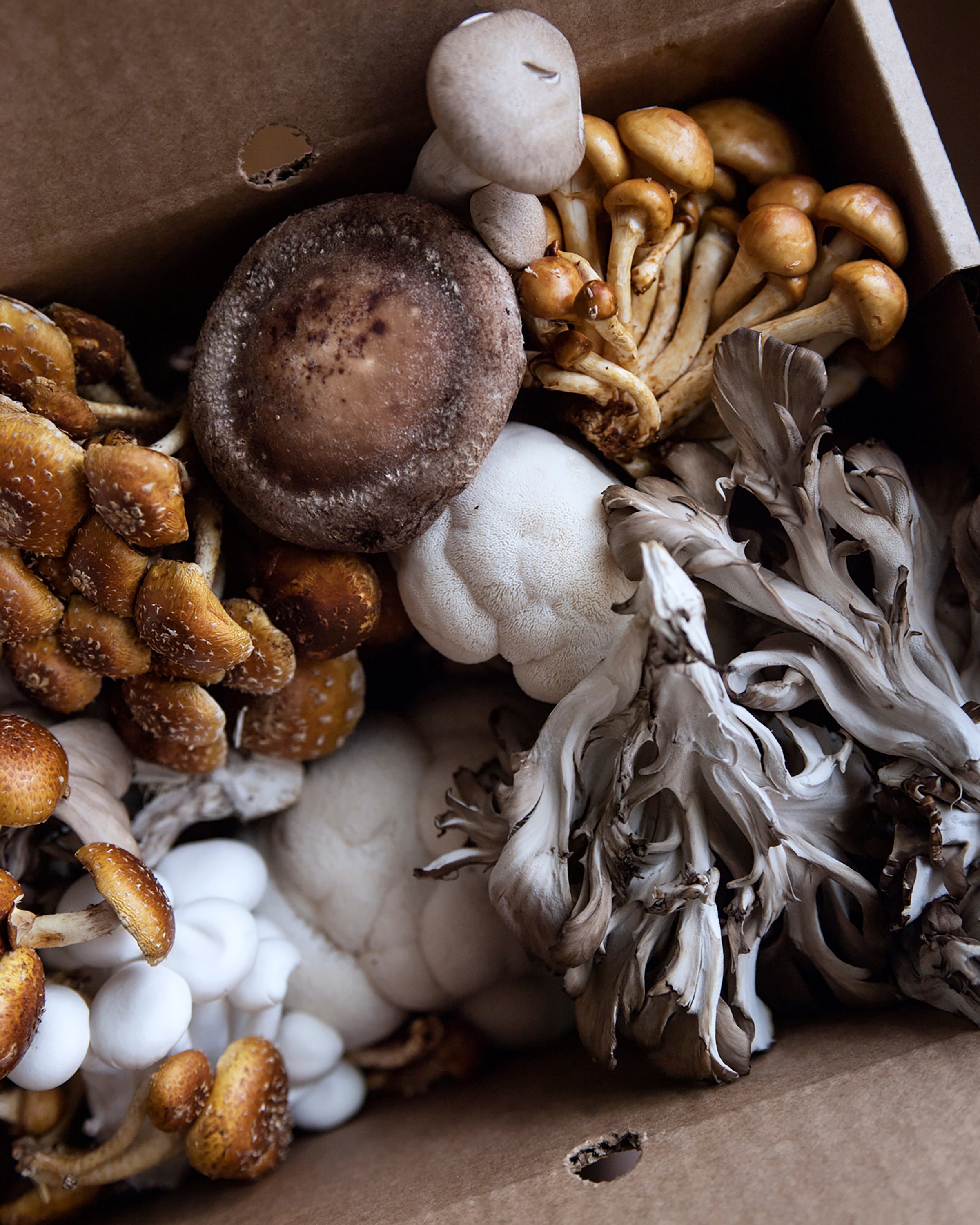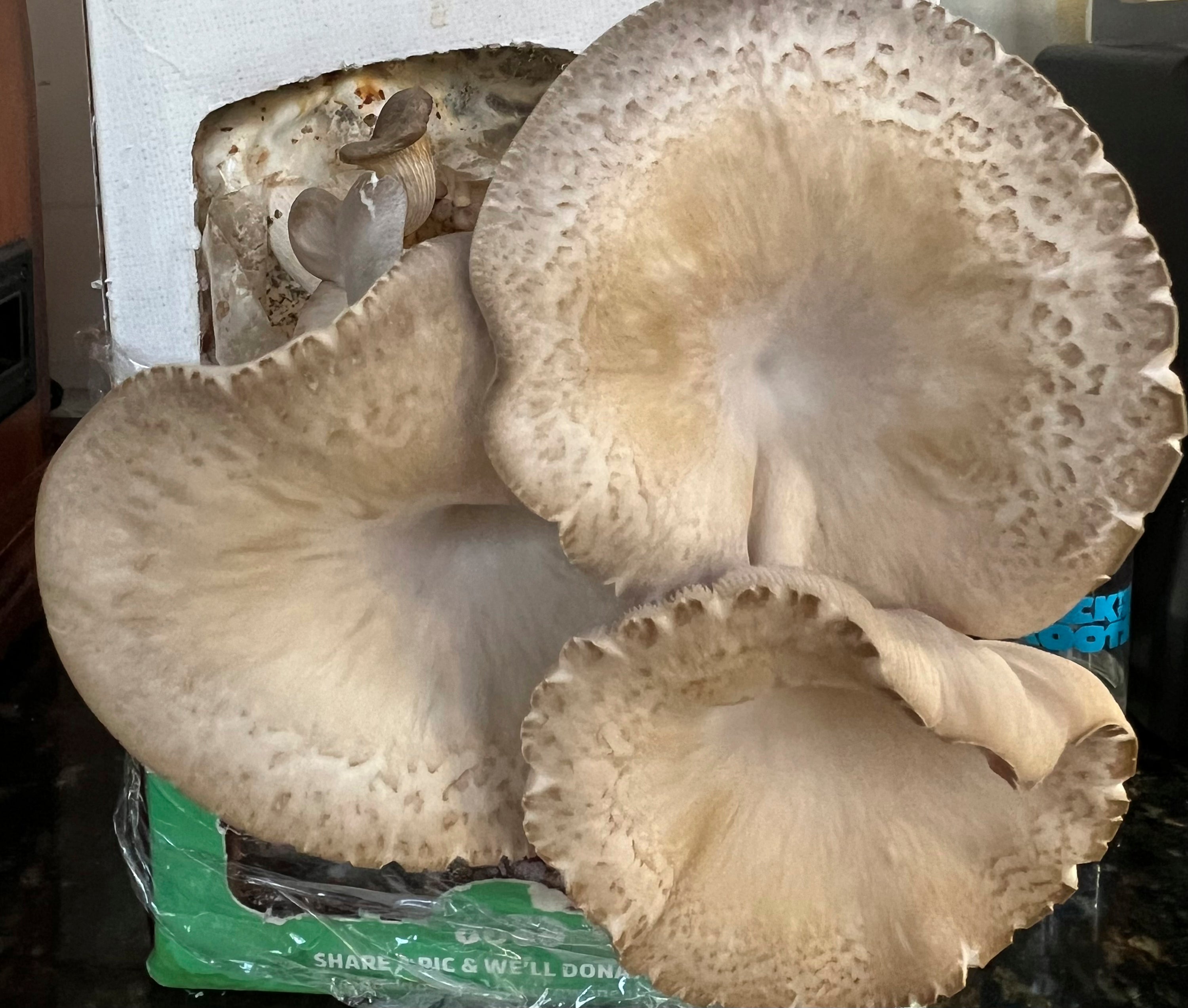Why you should grow your own mushrooms at home
The saying goes there are old mushroom hunters and there are bold mushroom hunters

Your support helps us to tell the story
From reproductive rights to climate change to Big Tech, The Independent is on the ground when the story is developing. Whether it's investigating the financials of Elon Musk's pro-Trump PAC or producing our latest documentary, 'The A Word', which shines a light on the American women fighting for reproductive rights, we know how important it is to parse out the facts from the messaging.
At such a critical moment in US history, we need reporters on the ground. Your donation allows us to keep sending journalists to speak to both sides of the story.
The Independent is trusted by Americans across the entire political spectrum. And unlike many other quality news outlets, we choose not to lock Americans out of our reporting and analysis with paywalls. We believe quality journalism should be available to everyone, paid for by those who can afford it.
Your support makes all the difference.My late Uncle Pepe was an avid mushroom hunter, rising early on late-summer Saturdays, field guide in hand, to head to a local New York City park for his weekly forage. Upon his return, my Aunt Jenny would meticulously wash the hen-of-the-woods, turkey tail or other fungi free of soil and insects, and sauté them with hot peppers or add them to sauces or stews. Then the phone call would come, inviting my family over to share the bounty.
My father was always game, but my mother, who firmly believed in the old adage, “There are old mushroom hunters, and there are bold mushroom hunters, but there are no old, bold mushroom hunters,” wouldn’t allow us to partake in the feast until the following day, when my aunt’s and uncle’s survival would provide proof of its safety.
“They’re alive!” she would announce, holding the phone to one ear. And off we would go to enjoy the spoils of my uncle’s latest quest.
More than 40 years later, I still find myself craving those mushrooms. But since I’m not a mycologist, my deeply instilled trepidation has limited my foraging to seasonal farmers’ markets and specialty food stores. Recently, however, I’ve been growing oyster mushrooms in a cardboard box on my kitchen counter.
GROW KITS
Pre-incubated mushroom grow kits, such as those made by Back to the Roots and North Spore, are a great way for beginners like myself to get acquainted with the procedure. I just remove the brick of pre-incubated soil substrate, called “spawn,” from the box, soak it overnight, return it to the box, pull open a perforated panel and mist the exposed substrate with water twice daily. Within two or three weeks, I have a side-dish-size harvest with a second on the way.
Yes, that’s the amateur way to grow mushrooms, but it serves my purpose as a fun activity with an edible endgame. And it’s a conversation piece that impresses visitors who don’t realize a 5-year-old can do it blindfolded.
OR FROM SCRATCH
If you’re more serious about cultivating mushrooms than I am -- or want a larger harvest -- it would be more productive and cost-effective to grow them from scratch. It’s easy to do, but you’ll have to source your own materials.
For starters, you’ll need a wooden, metal, or plastic box or tray that’s roughly 6 inches deep and large enough to hold your desired harvest (12-by-18 inches is a good starting point).
You’ll also need a growing medium, the substrate. White button mushrooms prefer a 50/50 mix of compost and well-rotted manure, oyster mushrooms do well in oat or wheat straw, and shiitakes like sawdust.

Finally, you’ll need fungal spores (think of them as seeds), which you can purchase online from websites including northspore.com or at other specialty retailers; search for “mushroom growing supplies” for options.
Wash and disinfect your hands and sterilize supplies to avoid contamination with bacteria, mold or non-mushroom fungi, then add substrate to fill the box to within an inch of its top. Spread the spores evenly over the substrate and gently moisten it once, then mist or spray it with water twice daily, keeping it consistently moist but not soggy.
To incubate quickly and effectively, the spore-topped substrate should be stored away from direct sunlight at or close to 70 degrees. If you cannot keep a room in your home at that temperature, set the box or tray on a thermostat-regulated heating pad or seedling heat mat set to 70 but no higher (warmer temperatures can kill the spores). A soil thermometer can serve as a backup to ensure you aren’t cooking your mushrooms before they can grow.
Lightly drape a piece of plastic wrap over the box to help contain moisture, but don’t seal it tightly.
Soon, a white coating will form on the surface of the substrate. That’s mycelium, a network of fungal threads from which your mushrooms will sprout. When the substrate is completely coated, top it off with a sprinkling of substrate, remove the heating mat, and move the tray into a cooler, 55- to 60-degree spot such as a basement or temperature-controlled garage.
Mushrooms typically sprout, or “fruit,” within a week or two, then nearly double in size daily until they reach maturity. Depending on the variety, they will be ready to harvest, with their caps fully open, in roughly three to four weeks. Use a sharp, sterilized knife to cut them at soil level to avoid disrupting nearby growth.
Expect diminishing returns for the next few months until the substrate is depleted, then repeat the process, you old, bold mushroom grower, you.
—-
Jessica Damiano writes the award-winning Weekly Dirt Newsletter and regular gardening columns for The AP. Sign up here to get weekly gardening tips and advice delivered to your inbox.
—-
For more AP gardening stories, go to https://apnews.com/search?q=gardening#nt=navsearch